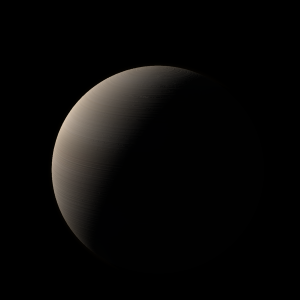|
|
Space Astro
|
Info for exoplanet "Yuangwub"
| Scientific (actual) data |
|---|
| Planet | 4 Uma b |
| Planet status | Confirmed |
| Mass sini | 7.1 |
| Orbital period | 269.3 |
| Semi major axis | 0.87 |
| Orbit eccentricity | 0.432 |
| Angular distance | 0.011083 |
| Discovered | 2007 |
| Updated | 2014-08-27 |
| Omega | 23.81 |
| Tperi | 2452990 |
| Publication | Published in a refereed paper |
| Detection type | Radial Velocity |
| Star name | 4 Uma |
| Right ascension | 130.05° |
| Declination | 64.33° |
| Mag v | 5.79 |
| Star distance | 78.5 |
| Star metallicity | -0.25 |
| Star mass | 1.234 |
| Star sp type | K1III |
| Star age | 4.604 |
| Star temperature | 4415 |
| Wikipedia article | 4 Uma b |
Back
| |
| Fictional info (?) |
|---|
| Suggested name | Yuangwub |
| Planet type | Cold planet |
| Yuangwub's atmosphere is similar to Erswang's in its primary composition of nitrogen and hydrogen, but it contains more "ices" such as water, ammonia, and methane, along with traces of other hydrocarbons. This planet is named after the deity Yuangwub, the messenger of prosperity.
Yuangwub's surface appears extremely bruised and is similar in appearance to the Moon's, indicating that it has been geologically inactive for billions of years.
It may also have a rocky core of heavier elements, but like the other cold planets, Yuangwub lacks a well-defined ozone layer. |
| Atmosphere | Nitrogen | 54% |
| Hydrogen | 45% |
| Ethane | 0.33% |
| Molecular hydrogen | 0.11% |
| Atmospheric pressure | 2.4 bar |
 |
| Moon | Aoryin | Large slightly egg-shaped oceanic comet |
| Google search for Yuangwub |
|
Website by Joachim Michaelis
|
|
|
|